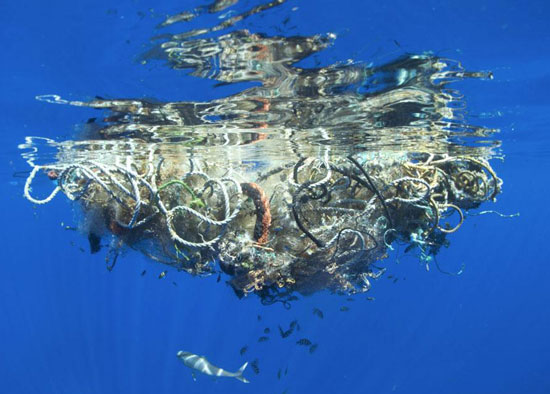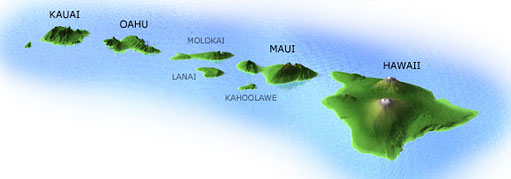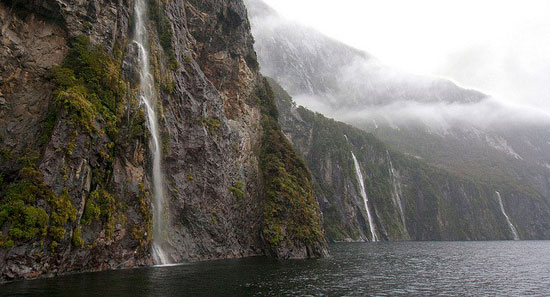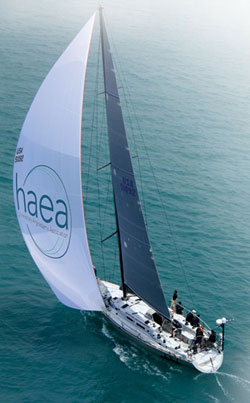 The Trans-Pac race of 2013 which begins for us on Thursday, July 11th @ 1 PM PDT, will have us sailing and racing the 52’ Santa Cruz, Bodacious IV, (shown on the right with the HAEA logo.) The course distance from Los Angeles, California to Honolulu, Hawaii is approximately 2250 miles across the Eastern Pacific.
The Trans-Pac race of 2013 which begins for us on Thursday, July 11th @ 1 PM PDT, will have us sailing and racing the 52’ Santa Cruz, Bodacious IV, (shown on the right with the HAEA logo.) The course distance from Los Angeles, California to Honolulu, Hawaii is approximately 2250 miles across the Eastern Pacific.
The Pacific Ocean is the largest ocean on the Earth and at just less than 64,000,000 square miles; it is about 46% of the world’s oceans! The boundaries are the North and South Americas on the east, Asia, Australia and New Zealand to the west, Alaska and the Russian coast on the North and Antarctica completes the southern boundary. This vast ocean is sub-divided by the equator into the North and South Pacific Oceans.
The deepest point in any ocean on the earth is in the Pacific Ocean. The Mariana Trench, in the western part of the Pacific Ocean, is very deep at just less than 36,000 feet!
The stretch of ocean we will cross to Hawaii from California is rich with sea life. We’ll likely see many seals, birds and fish of all types. We’ll be keeping a close eye out for whales as we cross their migration path, but this time of year, most of the whales have moved on further north to their summer grounds.
We’ll also be keeping a close eye out for ocean debris. There is a large “gyre” (a circulation) of trash that is mostly north of the Hawaiian Islands, but we are sure to see some of the trash that breaks free from the gyre. A lot of this debris was washed out to sea during the 2011 Tsunami in Japan. We have been told of large sections of homes that are still floating in the ocean! The tsunami that caused this was started by the 7.1 magnitude “Fukushima” earthquake of April 11, 2011. The entire coast of the Pacific Ocean is vulnerable to earthquakes, both east and west, and is known as the “ring of fire,” a ring around the ocean of active volcanos and continually shifting earth. Parts of this ring of fire are the volcanoes that created the Hawaiian Islands – our destination on this race.
The Hawaiian Islands make up the 50th state of the United States of America. Brought to statehood in 1959, Hawaii is the only state that is made up entirely of Islands. There are six main islands, but the archipelago includes hundreds of islands and small tips of underwater mountains created by volcanos spread over 1500 miles. The total coastline is over 750 miles long. The Hawaiian Islands are part of a sub-region known as Oceania that stretches across the vast Pacific all the way to New Zealand and Australia. One interesting fact about Hawaii is that it is the only state in the union that doesn’t have at least one part of its boundary that is a straight line!
Environmental diversity is one of the amazing things about Hawaii. With high mountains and the constant trade winds, a single island can have a climate that varies from cold, alpine conditions to dry tropical conditions with rainforest in between. The trade winds bring moisture that falls on the eastern windward side of the islands, and can even bring snow to the higher elevations. This winds dry as they cross the island creating a dry, arid environment on the western side, called the leeward side. Mount Wai’ale’ale on the island of Kaua’i has an average rainfall of 460 inches, the second highest average on earth.
Here’s a video introducing Hawaii narrated by famous oceanographer, Sylvia Earle.
Hawaii’s tropical climate has a pretty even temperature range. Summer high temperatures are typically in the high 80s, while winter high temperatures are usually in the low 80s. Hawaii’s climate is typical for the tropics, although temperatures and humidity tend to be a bit less extreme because of the steady trade winds from the east.
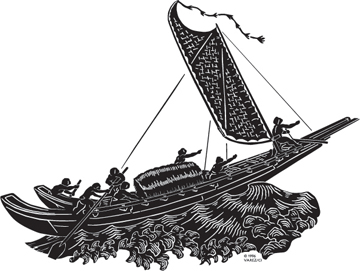 Differing version of the original settling of Hawaii are still debated. Some believe that the first Polynesians arrived in Hawaii in the 3rd century from the Marquesas, who were followed by Tahitian settlers centuries later in AD 1300, and went on to conquer the original inhabitants. Others believe that there was only a single, extended period of settlement.
Differing version of the original settling of Hawaii are still debated. Some believe that the first Polynesians arrived in Hawaii in the 3rd century from the Marquesas, who were followed by Tahitian settlers centuries later in AD 1300, and went on to conquer the original inhabitants. Others believe that there was only a single, extended period of settlement.
British sailor and explorer Capt. James Cook and the crews of his two ships, H.M.S. Resolution and H.M.S. Discovery, was believed to be the first foreign visitor to the Hawaiian Islands, arriving in 1778 as he sailed and explored the oceans of the world. Cook named these the Sandwich Islands after the Earl of Sandwich who was his sponsor for his exploration trip. Cook was killed by natives on the island of Hawaii one year after his arrival in a skirmish over a small boat that had been stolen from him.
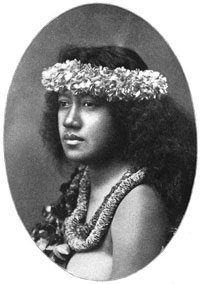 Hawaii, being an isolated archipelago in the middle of the vast Pacific Ocean, was isolated from other populations of the world and consequently was very vulnerable to the diseases brought by European settlers. At the time of Captain Cook’s arrival, native Hawaiians may have numbered some half a million; though there has been debate over such estimates. Over the span of the first century after first contact with Europeans, the native Hawaiians (estimated at around a half million) were nearly wiped out by new diseases introduced to the islands; influenza, smallpox, measles, and whooping cough, among others. The 1900 U.S. Census (2 years after annexation by the U.S.) identified 37,656 residents of full or partial native Hawaiian ancestry. The 2000 U.S. Census identified 283,430 residents of Native Hawaiian or Pacific Islander ancestry.
Hawaii, being an isolated archipelago in the middle of the vast Pacific Ocean, was isolated from other populations of the world and consequently was very vulnerable to the diseases brought by European settlers. At the time of Captain Cook’s arrival, native Hawaiians may have numbered some half a million; though there has been debate over such estimates. Over the span of the first century after first contact with Europeans, the native Hawaiians (estimated at around a half million) were nearly wiped out by new diseases introduced to the islands; influenza, smallpox, measles, and whooping cough, among others. The 1900 U.S. Census (2 years after annexation by the U.S.) identified 37,656 residents of full or partial native Hawaiian ancestry. The 2000 U.S. Census identified 283,430 residents of Native Hawaiian or Pacific Islander ancestry.
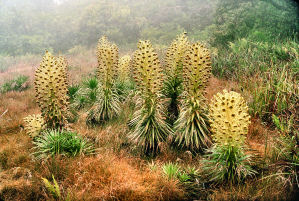 This same isolation created the geological and environmental uniqueness of Hawaii and highlights the basic systems of evolution of the earth. Since there was little if any way for species to travel to Hawaii, the evolution of native species followed the most basic of natural courses: wind, waves and wings. Seeds or bugs that were brought by winds, by waves or on the wings of birds! Because of this, Hawaii has more endangered species than any other state in the US. It also has lost a higher percentage of its endemic (native) species in the process. The National Park Service found these reasons compelling and created two National Parks on the islands. Haleakala National Park on the island of Maui and Hawaii Volcanoes National Park on the island of Hawaii. Both of these parks include volcanos, some of which are still active, which means a visitor can still see flowing lava.
This same isolation created the geological and environmental uniqueness of Hawaii and highlights the basic systems of evolution of the earth. Since there was little if any way for species to travel to Hawaii, the evolution of native species followed the most basic of natural courses: wind, waves and wings. Seeds or bugs that were brought by winds, by waves or on the wings of birds! Because of this, Hawaii has more endangered species than any other state in the US. It also has lost a higher percentage of its endemic (native) species in the process. The National Park Service found these reasons compelling and created two National Parks on the islands. Haleakala National Park on the island of Maui and Hawaii Volcanoes National Park on the island of Hawaii. Both of these parks include volcanos, some of which are still active, which means a visitor can still see flowing lava.
We hope you’ll be able to follow us along on our journey and race to Honolulu, Hawaii. We’ll do our best to bring you interesting facts and pictures from along the way

